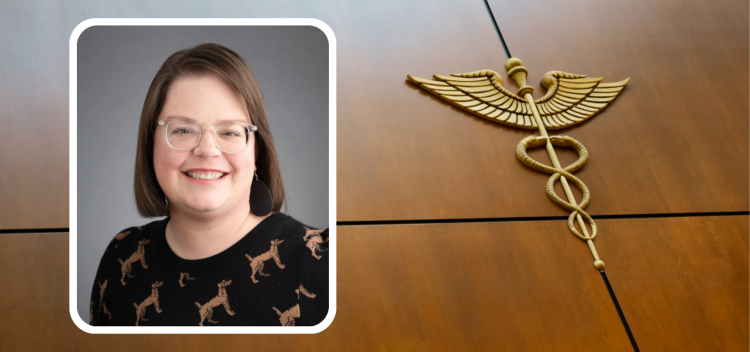Dr. Noelle LoConte leads academic-community partnership to reduce radon risks in Native communities

A one-year project led by Noelle LoConte, MD, FASCO, associate professor, Hematology, Medical Oncology and Palliative Care, facilitated radon education, testing and mitigation for 42 households of the Stockbridge-Munsee Band of the Mohican Nation, one of Wisconsin’s federally recognized tribal communities.
Done in collaboration with the the Stockbridge-Munsee Community Health and Wellness Center, the Wisconsin Department of Health Services (DHS), and the Wisconsin Cancer Collaborative, the effort is a promising example of how academic and community partnerships can help Wisconsin’s Native American communities reduce their risk of radon-related lung cancer.
Dr. LoConte shared the partnership's results at the 2024 American Society of Clinical Oncology (ASCO) Quality Care Symposium.
Symptoms and diagnosis
For decades, the high levels of lung cancer in the Stockbridge-Munsee community perplexed health officials.
“There were simply more instances than can be attributed to smoking alone,” explains Dr. LoConte, whose work focuses on cancer prevention and control through outreach and education. “At a listening session prior to the project’s start, the community told me they felt they had an environmental exposure increasing rates of cancer.”
One plausible explanation was radon gas. Radon—a radioactive biproduct of decaying, naturally occurring uranium in the ground—is the second leading cause of lung cancer after smoking according to the U.S. Environmental Protection Agency (EPA).
As it is odorless and tasteless, radon’s presence can only be detected by specific testing.
Testing, mitigation and education
While radon test kits only cost around $20, one-time mitigation—typically the installation of a PVC pipe that sucks radon out of the ground—costs between $700 and $2,000 per household.
“That’s a lot of money in this community,” Dr. LoConte says. “Most households can’t afford to do anything even if high levels are found.”
Dr. LoConte secured enough funding through the State of Wisconsin for eighty-five radon test kits. Project team members, led by staff at the Stockbridge-Munsee health center, distributed the tests throughout the reservation’s community, which as of the start of the project had 1,822 enrolled members.
The Wisconsin DHS estimates that one in ten households in the state has high levels of radon—defined as four picocuries per Liter (pCi/L)—with an average level of 5.7 pCi/L. Of the 64 tests returned from Stockbridge-Munsee households, 42 (65.6%) tested positive for high radon with an average level of 14.1 pCi/L.
“Tribal officials told me they thought their land was poisoning them,” says Dr. LoConte. “They were right.”
The University of Wisconsin (UW) Carbone Cancer Center found grant and philanthropy funding such that each home with a high radon test could receive one-time mitigation. These households reported mitigation would not have been possible without the program.
The program also provided radon mitigation training and certification for one tribal community member, as well as more general education on the risks of radon and the use of testing kits.
Future partnerships
“Bringing awareness around elevated radon levels in Indian country is important to reducing cancer deaths,” notes Andrew Miller, director of the Stockbridge-Munsee health center.
Indeed, Dr. LoConte hopes to run similar initiatives for all the tribal communities, and perhaps other rural communities, throughout Wisconsin—although this effort will likely require federal funding. She is presently collaborating with the Bad River Band of Lake Superior Chippewa (Ojibwe) to expand testing on the Bad River reservation.
“If nothing else, a key lesson here is that community health outreach is incredibly meaningful,” Dr. LoConte says. “And the first step is to get into the community, make connections, and prove yourself to be a reliable, respectful and effective partner.”
Acknowledgements
Dr. LoConte credits Howard Bailey, MD, professor, Hematology, Medical Oncology and Palliative Care, and director of the UW Carbone Cancer Center, for help resourcing the project, as well as the Marriott Daughter Foundation and the Catalent Foundation for providing grant funding. She also thanks Danielle Yancey, MS, director, Native American Center for Health Professions (NACHP), and Bret Benally Thompson, MD, clinical associate professor, Hematology, Medical Oncology and Palliative Care, and Director of Indigenous Health and Cultural Guidance at NACHP, for their support.
The Stockbridge-Munsee Band of the Mohican Nation is a sovereign nation; this project was undertaken with the approval and collaboration with their tribal government. They are coauthors and retain the control/use of the data.